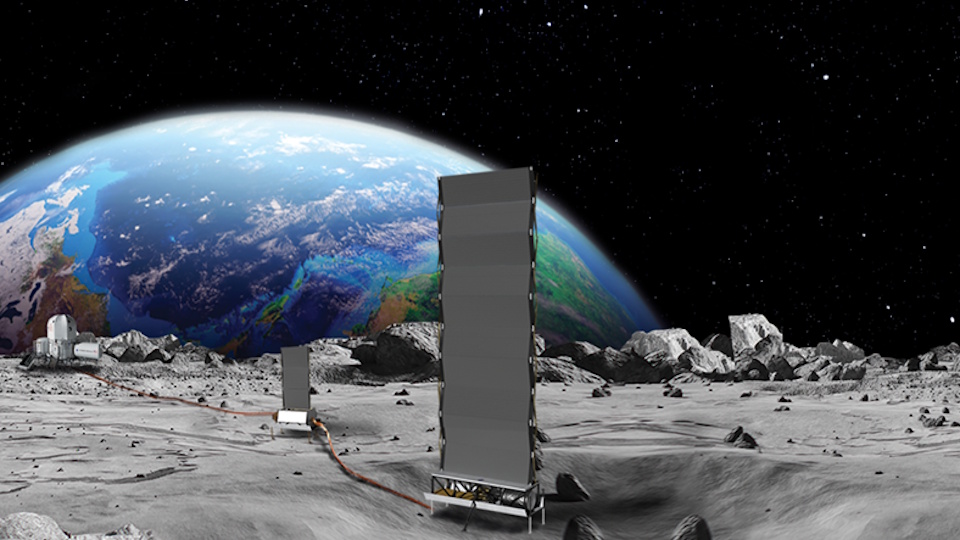Sign up for the Starts With a Bang newsletter
Travel the universe with Dr. Ethan Siegel as he answers the biggest questions of all.
For many years, NASA’s science mission directorate — which leads humanity in studying the Earth, the Sun, other planets and world and the greater Universe from space — has focused on maintaining a balanced portfolio. This plan ensures that:
flagship missions, like Hubble and JWST or the most recent Mars rovers,
medium-sized missions, like the Lunar Reconnaissance Orbiter, SPHEREx, TESS, or the Europa Clipper,
small-sized missions, like OSIRIS-REx and cubesat missions,
would all continue to take place. A balanced portfolio prevents any one mission, no matter how important, from going over budget and diminishing needed funds to support the other important vital endeavors.
The great danger to a balanced portfolio, which ensures the maximum amount of across-the-board success for science and society, is that one endeavor without an additional source of funding for it would come along and suck up so much funding that it would unbalance the portfolio, leading to either the underfunding or outright termination of so many vital projects. This is known as the “eating their lunch” problem within NASA, as a too-expensive project will prevent these other necessary endeavors from being funded.
With a new declaration (as of August 4, 2025) that NASA now plans to build a 100 kilowatt nuclear reactor on the Moon, and that it must launch by 2030, a path for how to permanently defund and destroy NASA science is now clearly charted. Here’s what committing to such a nuclear reactor on the Moon really means for the future of NASA science.
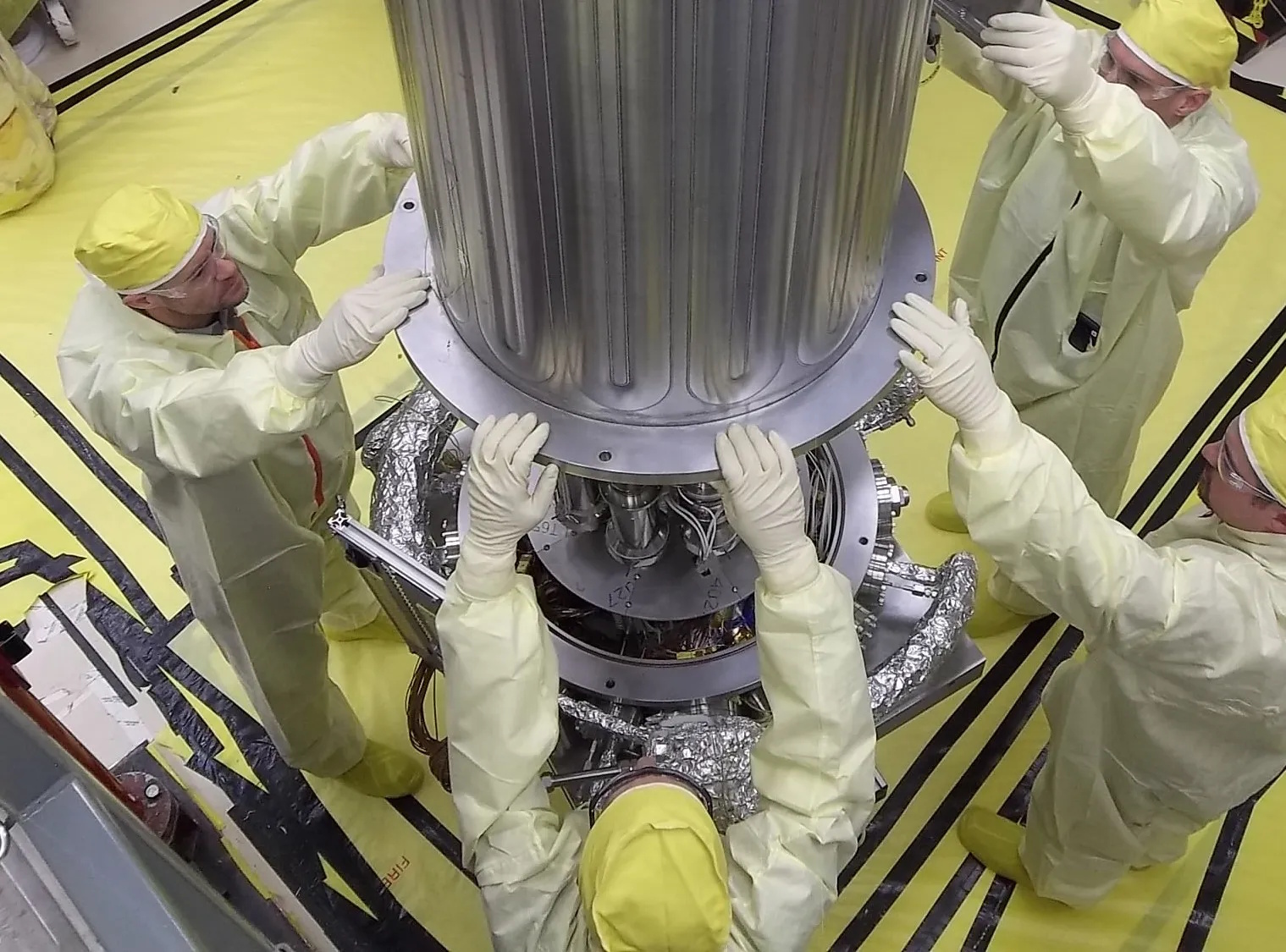
NASA and NNSA engineers lower the wall of the vacuum chamber around the Kilowatt Reactor Using Stirling TechnologY (KRUSTY system). The vacuum chamber is later evacuated to simulate the conditions of space when KRUSTY operates.
Credit: Los Alamos National Laboratory
If we’re ever going to have a sustained lunar presence — such as in the form of a human colony living continuously on the Moon — a number of things are going to be needed. We’re going to need resources that humans require: resources like breathable air, safe drinking water, and sources of food. Those essentials will likely be brought with the first humans who seek to settle on the Moon, up until the point where we can safely isolate a region of the Moon (beneath a dome, for example) to create and successfully maintain an artificial biosphere. That longer-term goal will likely involve a mix of plants, animals, fungi, and microorganisms in an airtight environment, where humans can sustainably thrive indefinitely.
However, one major difficulty that humans will face on the Moon that isn’t present on Earth is the extremely long durations of each night. Only near the extreme poles of Earth do nights ever last longer than a fraction of our 24 hour day, but on the Moon, every single location experiences approximately 14 consecutive days of sunless night with each lunar month that elapses. Whereas the Earth rotates on its axis once every 24 hours, the Moon rotates a full 360° in the same amount of time it revolves around the Earth, leading to 14 consecutive days where it experiences direct sunlight followed by 14 consecutive days of Sun-free darkness.

Although the Moon is tidally locked to the Earth so that the same side always faces our planet, only 50% of the lunar surface is ever illuminated by the Sun. Due to the Moon’s tidal locking, it takes the same amount of time to complete one rotation on its axis as it takes to complete one revolution around the Earth: the duration of a lunar month. Except for some “peaks of eternal light” at the poles, this leads to 14-day nights all across the Moon’s surface.
Credit: Tomruen/Wikimedia Commons
This renders our conventional source of energy for most space missions — solar panels that leverage direct sunlight — wildly impractical for the Moon. In fact, only at or very close to the lunar poles, where deep, permanently shadowed craters are flanked by high crater walls that are always exposed to the Sun, are solar panels a viable option for providing continuous power. You might appeal to battery technology or other energy storage solutions, but the idea that the high energy demands of a lunar colony, which would by necessity be far greater than the energy demands of a comparably-sized collection of humans on Earth, could be met for 14 days with batteries alone is far beyond the scope of current technology.
But that’s where the idea of nuclear power comes in. Unlike chemical-based fossil fuel reactions, which both require combustion reactions (where oxygen is free and abundant on Earth) and large amounts of fuel (as only ~0.0001% of the reactant mass gets converted into energy in most chemical reactions), nuclear fission based reactors don’t require an atmosphere, convert about 1000 times as much mass into energy via Einstein’s E = mc², and already have a head start: with NASA’s Kilopower project, which ended in 2018, having developed preliminary concepts and technologies that could lead to an affordable, long-duration source of power on the Moon.
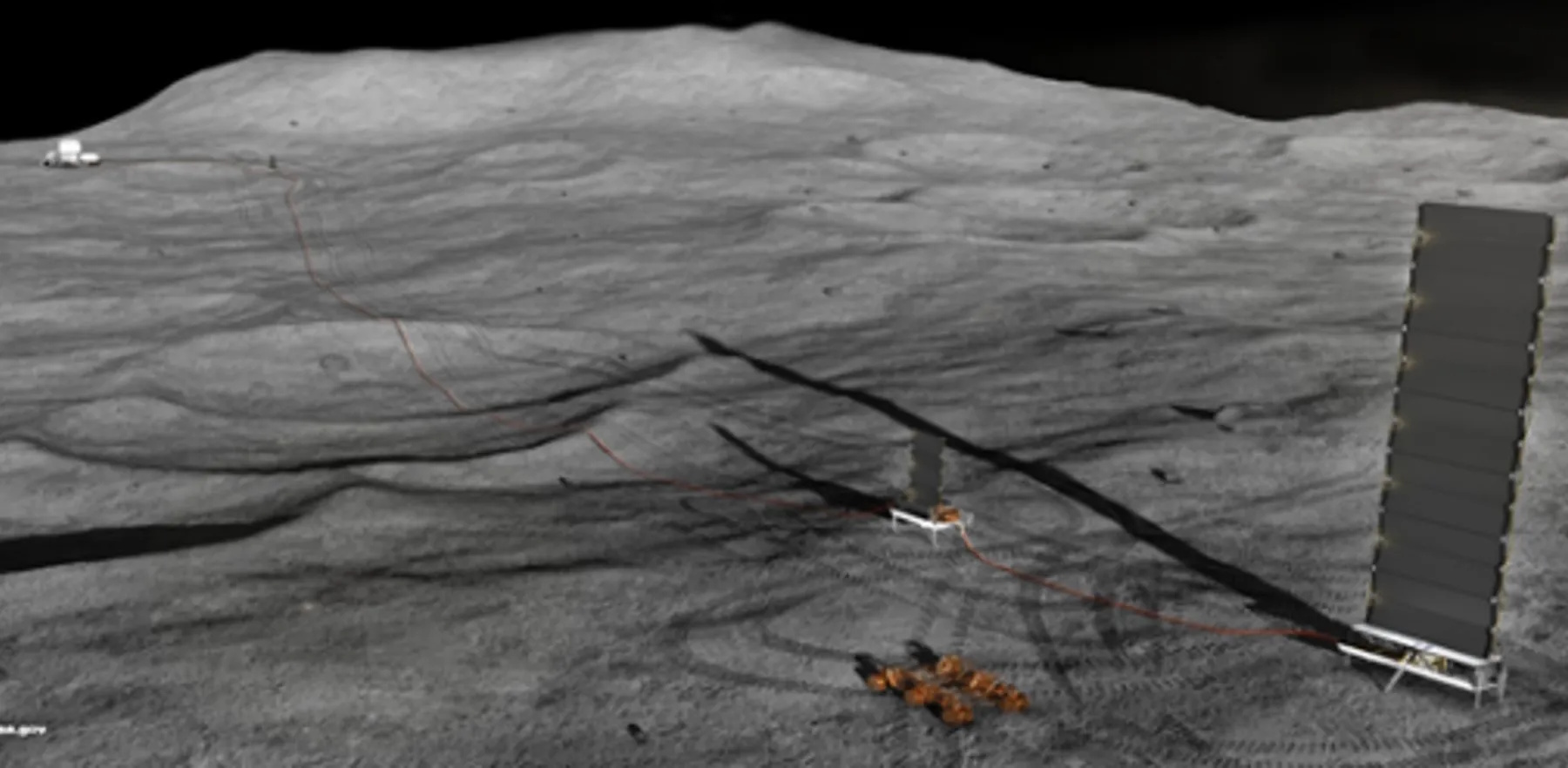
This illustration shows the conceptual setup of NASA’s Fission Surface Power Project, which would be a small, electricity-generating nuclear fission reactor that could be used to power lunar infrastructure or, downstream, Martian or other off-world infrastructure. Safe, efficient, reliable, and continuous energy production is necessary for a sustained lunar colony.
Credit: NASA
The Kilopower Reactor Using Stirling TechnologY (KRUSTY) project was very successful, and was able to successfully demonstrate heat transfer technologies, using highly enriched uranium fuel, could indeed be leveraged to generate energy safely and reliably under conditions that were analogous to those that would be experienced on the Moon. The follow up endeavor to Kilopower was a joint endeavor between NASA and the Department of Energy: NASA’s Fission Surface Power Project. In 2022, three design concepts were selected, under the umbrella of the Artemis program, for a power system that could be ready to launch by 2029/2030 for a demonstration of power generation on the Moon.
The ultimate goal would have been to design, fabricate, and test a 40-kilowatt class fission power system, with a target date for lunar operations occurring in the early 2030s. 40 kilowatts of power is an interesting number, as it’s sufficient to continuously power 30 typical American households over the planned lifetime of such a reactor: 10 full years. This technology, once demonstrated on the Moon as part of supporting a lunar colony, would then be extended towards the next planetary goal: a colony on Mars. The Moon is thought of as a proving ground; Mars would be the ultimate goal for this type of technology, where humans have long dreamed of creating an off-world colony.
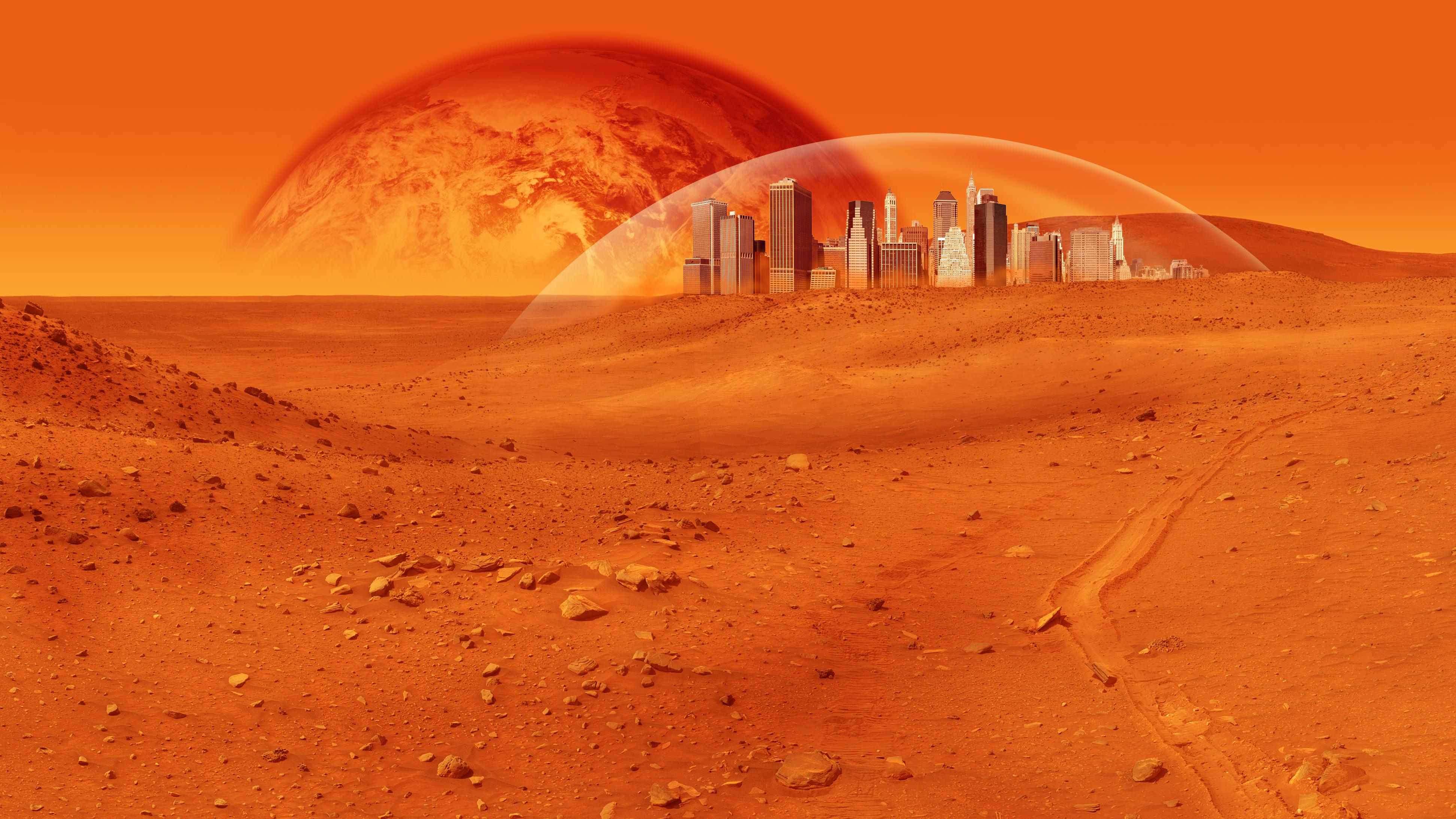
Humans have often dreamed of colonizing other worlds: both within our Solar System and beyond. While we may be a long way from a Martian colony involving skyscrapers, as illustrated here, many contend that a small, domed structure on another world, such as the Mars or the Moon, could represent a key step towards that ultimate goal.
Credit: Corepics VOF/Shutterstock
And that is indeed a long-term dream: the type of dream that has accompanied humanity since the dawn of the space age. If you want to have a scientific base — a continuously inhabited-by-humans scientific base — you need to power it no matter where you are. A relatively small nuclear reactor, of the type that goes on nuclear submarines, for instance, that can:
be sent to the Moon,
can land softly and successfully on the Moon,
that can be installed and can begin operations,
in the airless but dust-rich lunar environment,
that can be safely cooled and operated on a continuous basis,
is indeed a worth part of any plan that includes humans on the surface of another world. Nuclear power, for this application, is in fact an important part of any realistic such equation.
But this type of power isn’t necessarily the first order of business. For one issue, nuclear power plants need to be monitored and maintained. In fact, Russia’s Poseidon family of nuclear drones is one of very few uncrewed nuclear vessels, as it’s heavily taboo (for obvious safety reasons) to operate any nuclear power plant without a sufficiently trained and ready set of humans at the controls. For another, the Fission Surface Power System was designed to weigh below 6000 kg, to fit on a lunar lander module, and to produce low levels of radiation even 1 km away from the reactor. And for another, the risk of an environmental accident, associated with a launch failure, is very high, and must be safely mitigated for a nuclear endeavor on the Moon.
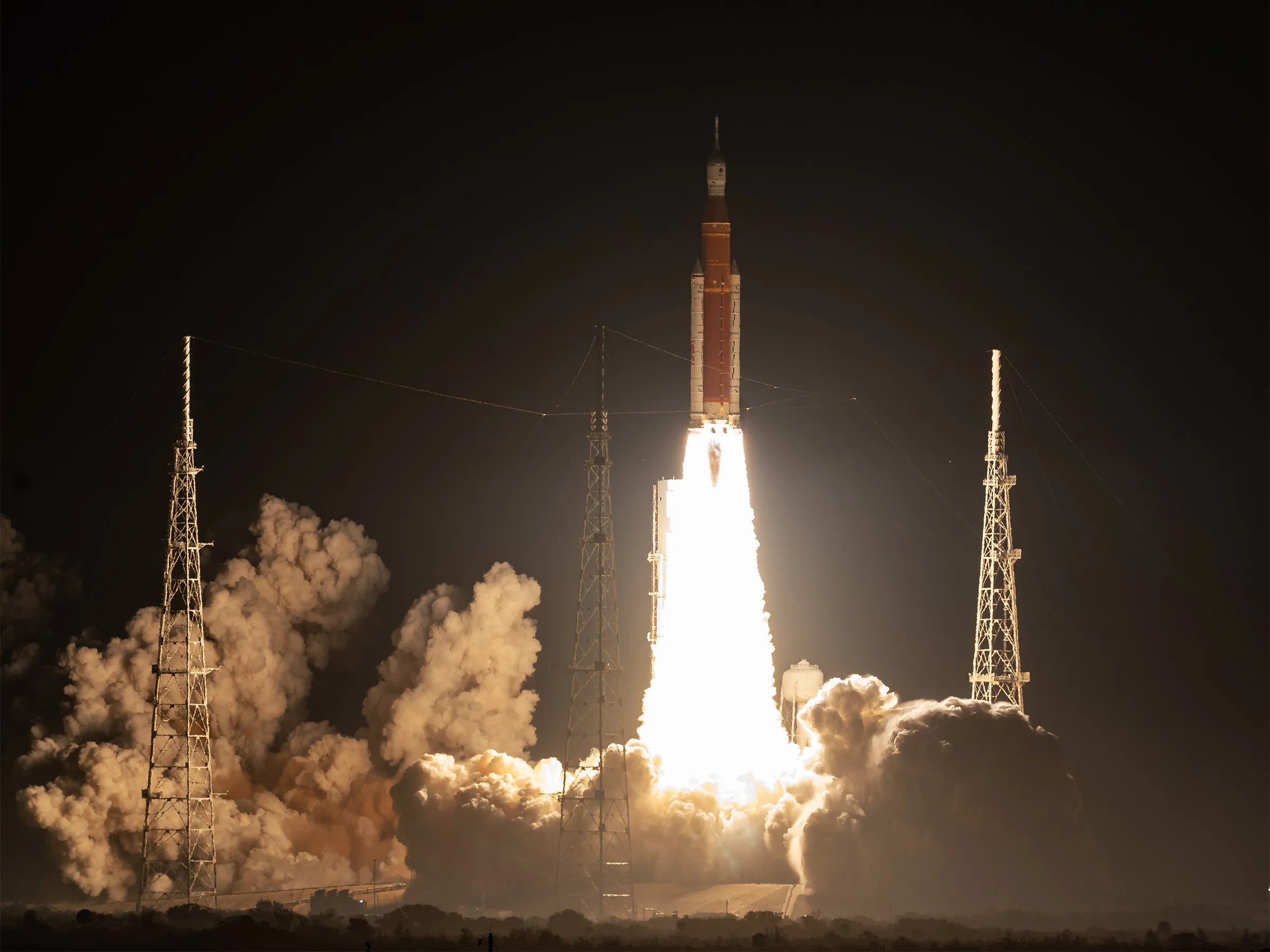
The launch of NASA’s Space Launch System (SLS) rocket, carrying the Orion spacecraft, occurred on November 16, 2022. The Artemis mission is planned to bring humans to the Moon for the first time since the end of the Apollo program a half-century ago, and represents the largest crewed spaceflight endeavor under the NASA umbrella, aside from the International Space Station, since the end of the Space Shuttle era.
Credit: Bill Ingalls/NASA
If we were developing these lunar nuclear fission power modules as part of a robust space science program, with a clear pathway to setting up a lunar colony (or, ultimately, a Martian colony) where humans could sustainably survive and thrive, this would be a worthy scientific endeavor. If we were adhering to NASA’s scientific mission principles and maintaining a balanced portfolio, including supporting missions across the various arms of the directorate and researchers at various stages of their careers, we could justify increasing costs to accelerate this particular area of development.
But none of that is what’s happening.
The President’s proposed budget, which was signed, largely unchanged, into law back in July as part of the “One Big Beautiful Bill Act,” includes tremendous cuts to NASA generally and to NASA science in particular, along with many other scientific and societal efforts. Thousands of NASA employees have already been laid off, fired, or compelled to resign, and many NASA centers now face partial or even complete closures, including the shuttering of basic facilities (like cafeterias and visitor areas) at those centers. The goal very clearly isn’t to enhance science within the USA through our space-based endeavors, or the decisions we’ve been making up until this point in 2025 would have looked very different.
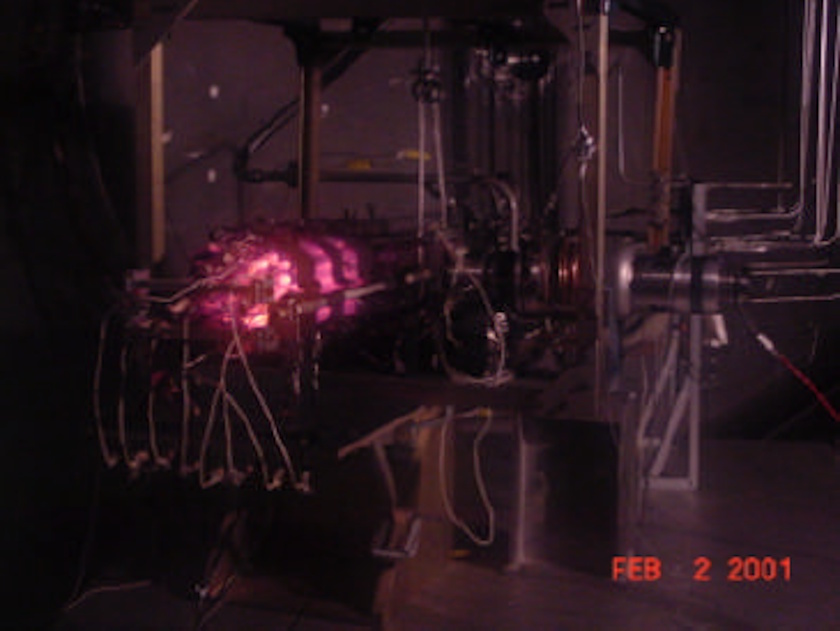
This image shows the SAFE-30 experimental space fission reactor during testing in 2001. The Safe Affordable Fission Engine was a series of NASA’s small experimental nuclear reactors for electricity production in space, the predecessor of NASA’s Kilopower.
Credit: David Poston et al., 2001
Instead, this seems likely to be a direct international move made to counter apparent competition in this sector from rivals: Russia and China in particular. We’ve long known that the USA isn’t the only player in space, as other nations — including China, Russia, India, Japan, Canada, and the entire European Union — all have prominent space agencies. When it comes to a large number of missions, NASA has worked together very fruitfully with various partners like the ESA, JAXA, and the CSA. However, dominance in any and every nuclear realm has long exhibited a rivalry between Russia and the USA, going way back to the USSR days.
In 2021, Russia and China announced joint plans to build a Moon base. In 2024, just last year, Roscosmos announced their intention to build a nuclear reactor on the Moon by 2033-2035 as part of that endeavor. And just in May of 2025, Roscosmos and the CNSA (Chinese National Space Administration) signed a memorandum of cooperation to build a lunar nuclear power plant by 2036 at the latest.
Now, very famously, there was a 1967 pact between many countries (and approved at the United Nations) known as the Outer Space Treaty that’s still intact today. It explicitly held that exploration and use of outer space shall be carried out for the benefit of all humanity and not the provenance of any one nation. That space is only for the use of peaceful purposes, that it shall not be harmfully contaminated by human activity, and that no claims of sovereignty or occupation will be recognized.
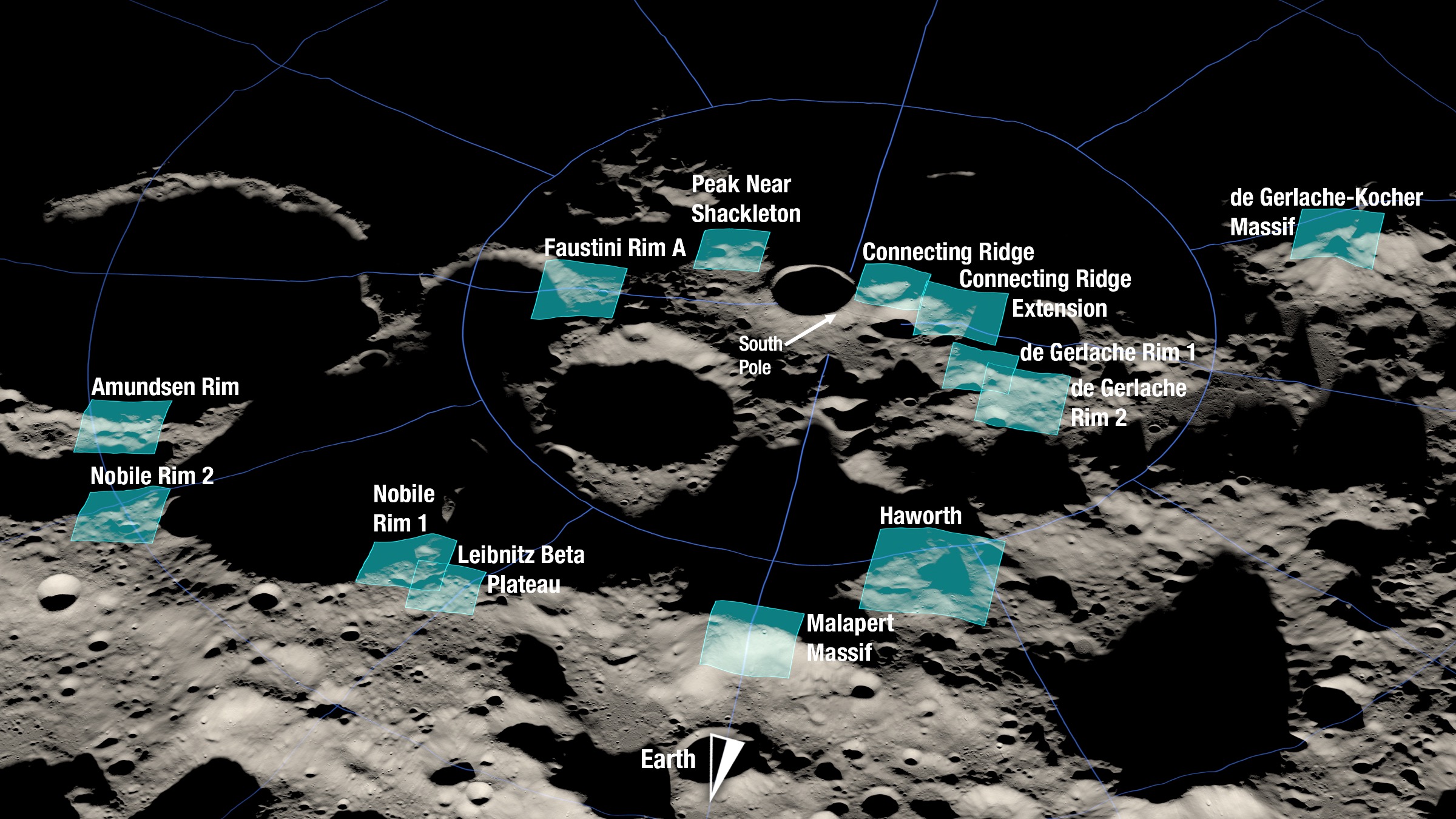
This rendering of the South Pole area of the Moon shows 13 candidate landing regions for Artemis III. Each region, shown in blue, is approximately 225 square kilometers, with some of them atop “peaks of eternal light” that always receive sunlight, or that border permanently shadowed craters on the Moon.
Credit: NASA
But as with all things, many were quick to find clever loopholes in such instances of this new form of space law. One well-known one deals with the safety concerns surrounding nuclear power plants in space. In particular:
nuclear power plants must be maintained and the radiation risks coming from them must be below a certain threshold,
the entity that creates and builds those power plants is responsible for them,
and it allows the establishment of an “exclusionary zone” around those plants that are closed to all states/entities that are non-owners of those plants.
In other words, it’s first come, first served when it comes to lunar and planetary real estate as far as nuclear plants are concerned, and that if you build one in a prime, sought after location, none of your terrestrial rivals can set foot on that land without your (or your state’s or entity’s) permission.
Want to exclude everyone else from the “peaks of eternal light” on the Moon? Build a nuclear power plant there. Want to exclude everyone else from the permanently shadowed polar craters that house large stores of water-ice? Build a nuclear power plant there. Want to stake out any sort of territory for yourself, your entity, your state, etc., while simultaneously excluding any of your perceived rivals from using that territory at all? Building a nuclear power plant there, while maintaining and continuing to operate that plant, is the surefire way to get it done. Without a robust space science and general science national profile to accompany the ambitious project of a lunar nuclear power plant, this cynical interpretation of the NASA administrator’s motives is the only one that fits the full suite of evidence we have.
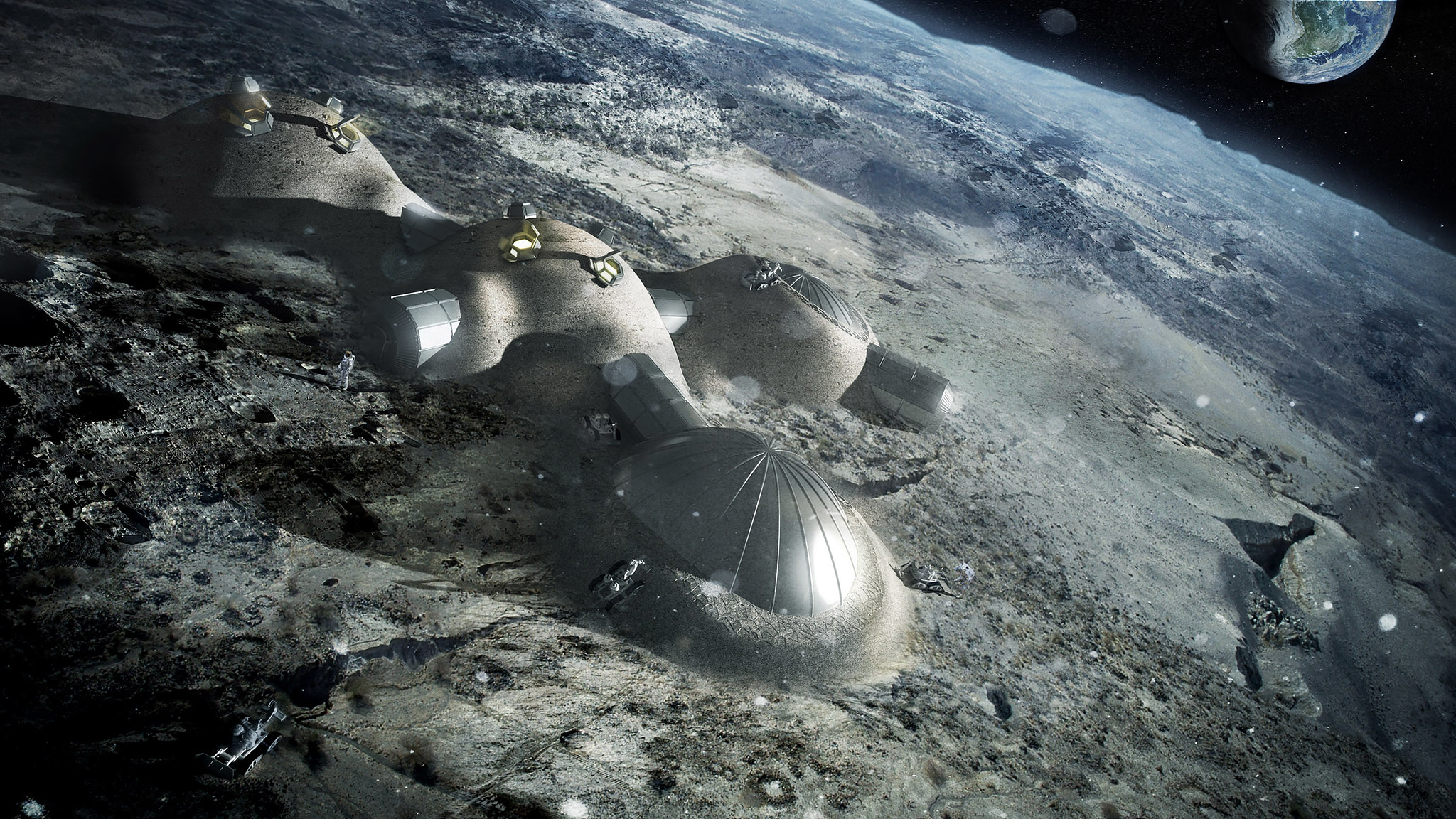
While terraforming an entire world, like the Moon, may be a monumental task, a smaller, more easily reachable goal would be to create a series of airtight and watertight domes that could be built and inhabited individually. This pathway toward terraforming could be done a little bit at a time, enabling us to build up our way to an inhabited, colonized world.
Credit: European Space Agency
It’s important to remember that science, not just applied science like spaceflight or space colonization, but basic, fundamental research science, is at the core of what makes a society equipped for long-term success. Failure to invest in it, including by de-funding previously approved endeavors, leads to brain drains that ultimately enrich other countries at the expense of the nation that was foolish enough to abdicate their leadership role in science. It happened to Germany under Hitler, it happened to Russia under Putin, and it’s happening in the USA under Trump in 2025.
Instead of following the roadmap for success laid out by the National Academies in their 2020 decadal report, however, which includes a healthy, forward-thinking investment in the core priorities of NASA science, America is making the same mistake in 2025 that Hitler made in Nazi Germany, de-funding long-term science endeavors while simultaneously devaluing the scientific process itself. Instead of seeking and embracing scientific truths, we’re:
The mandate to design, build, and launch a nuclear reactor to the Moon in a mere five years provides a thin veil of cover to continue these cuts, even if Congress fully restores NASA’s budget through reconciliation (which requires that the President then sign it into law) before the new fiscal year begins on October 1st. Endeavors towards funding this new reactor, at the discretion of the new NASA administrator, could easily “eat the lunch” of these irreplaceably valuable science missions unless any forthcoming congressional funding also comes along with a legal mandate for how that funding must be used.
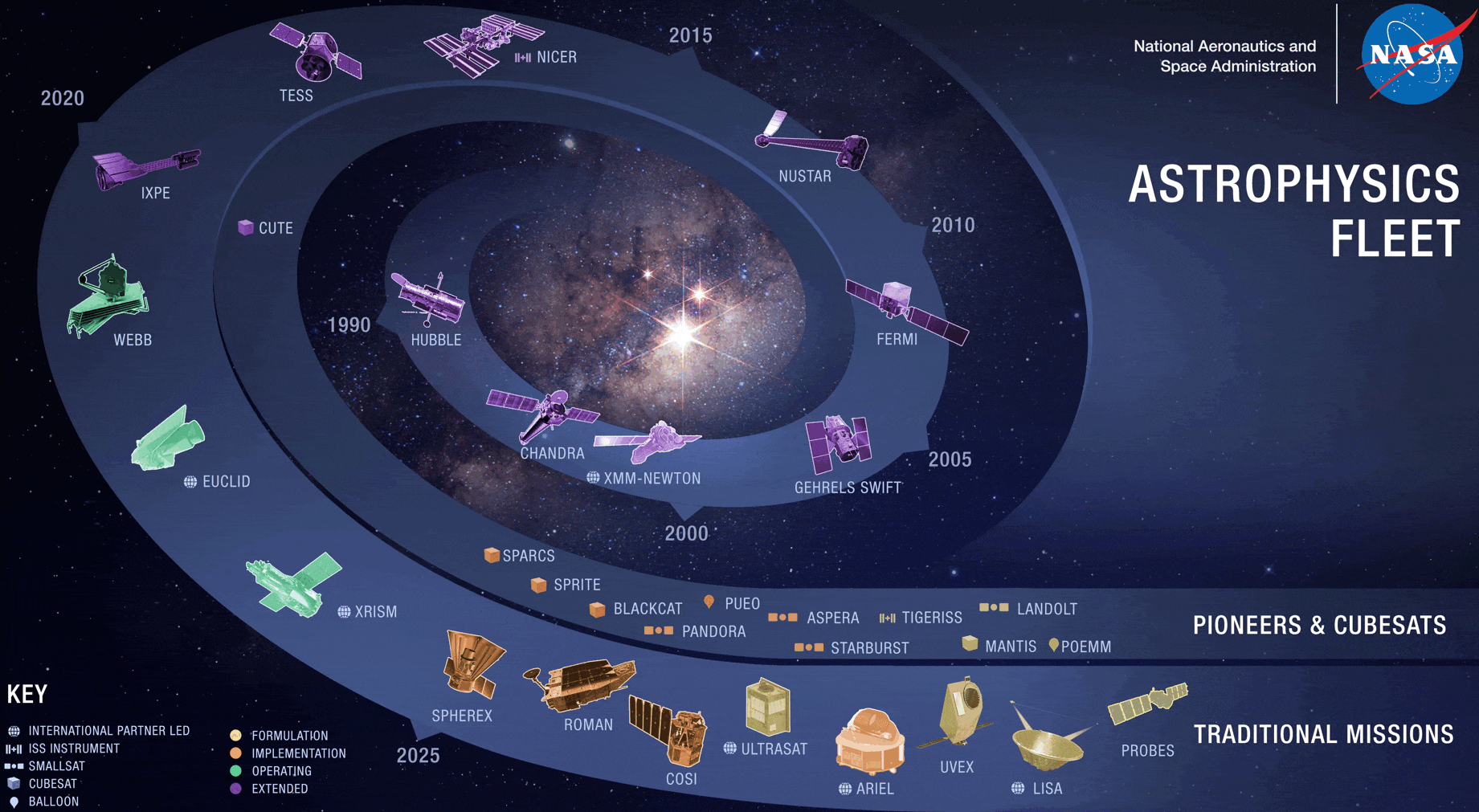
This animation switches between the planned NASA astrophysics fleet, as originally published by NASA in December of 2016, and the current budget proposal for the 2026 fiscal year for NASA astrophysics. With only a few notable exceptions, the entire portfolio of NASA astrophysics missions is slated to be eliminated.
Credit: NASA’s Goddard Space Flight Center
Make no mistake: there are good, legitimate reasons that one would want to develop and build a nuclear reactor on the Moon. There is a case to be made for increasing funding to support and include such an endeavor as part of a balanced portfolio that valued exploration of the Solar System. But instead, the White House is actively ordering NASA to destroy major satellite missions that impact the security and safety of the United States while reducing headcount at NASA by 20% thus far, with the senior staff being among the most severely impacted. The pivot to demand extraordinary new funding for a novel endeavor, without an equivalent increase in funding for NASA overall, is a recipe to de-fund far more critical areas: areas like basic science that actually power human society here on Earth.
To be clear, there are no humans on the Moon today, and a senior NASA administrator’s exact words, that “It is about winning the second space race,” points to the motive for this endeavor being for the United States, rather than Russia or China, to be able to stake out territory around such a reactor by declaring a keep-out zone under the guise of reactor safety, as declared earlier in a July 31 directive. As administrator Duffy said,
“Since March 2024, China and Russia have announced on at least three occasions a joint effort to place a reactor on the Moon by the mid-2030s. The first country to do so could potentially declare a keep-out zone which would significantly inhibit the United States from establishing a planned Artemis presence if not there first.”
Diverting NASA’s valuable resources away from the science that drives our society forward, with nothing to show for it that will benefit humans back here on Earth, is precisely what NASA’s new lunar nuclear reactor plans will lead to: a costly smokescreen that sucks up vital resources, leading to the ultimate elimination of what actually made America great.
Sign up for the Starts With a Bang newsletter
Travel the universe with Dr. Ethan Siegel as he answers the biggest questions of all.
